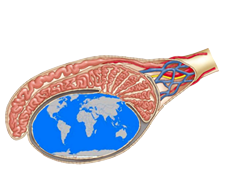TGCT Background
Is it Testicular Cancer or Testicular Germ Cell Tumor?
There are different types of testicular cancer depending on which cells in the testis are cancerous. Approximately 95% of testicular cancers arise in the germ cells and are called testicular germ cell tumors (TGCT). TGCT Diagnoses have been on the rise in the United States over the past 50 years. Other less common types of testicular cancer include Sertoli cell (cells that help nourish sperm cell) tumors and Leydig cell (cells that produce male sex hormones) tumors. Lymphomas (cancers of blood cells) can also be located in the testes, but these are not classified as testicular cancers.

How is TGCT found?
TGCT is the result of the rapid growth of abnormal cells in one or both testicles. Often men with TGCT notice a hard, painless lump or a change in the size of their testicle. Changes in the testicles that might indicate TGCT are often found through a testicular self-exam. For more information about self-exams, see the Testicular Cancer Resource Center's self-exam site. There is currently no screening test for TGCT.
Who is affected by TGCT?
TGCT is the most common cancer in men between the ages of 20 and 40 years, although it affects only 2% of men overall. Although men of all races/ethnicities can develop TGCT, it is most common among men of European ancestry and least common among men of African ancestry.
Only a few risk factors for TGCT are known. Studies have linked TGCT to:
- Being born with undescended testicles. Men whose testicles have not descended into the scrotum by 6 months of age are more likely to develop TGCT.
- Family history of TGCT. Having a blood relative—especially a brother—who has had TGCT is the strongest known risk factor for TGCT.
- HIV. Men who are infected with HIV are more likely to develop TGCT than men who are HIV negative.
How is TGCT treated?
Almost all men diagnosed with TGCT have surgery to remove the affected testicle. After that, some men may require radiation therapy or chemotherapy. In some cases, after removal of the affected testicle, a man may need only frequent check-ups to make sure the cancer has not returned. The survival rate of TGCT is very favorable.


